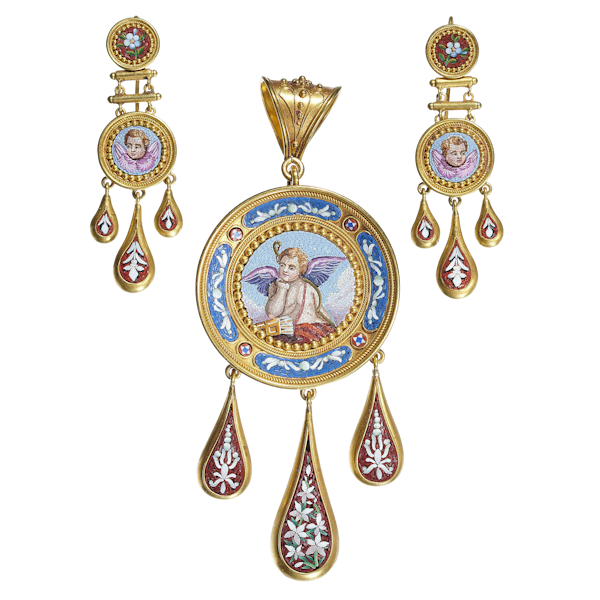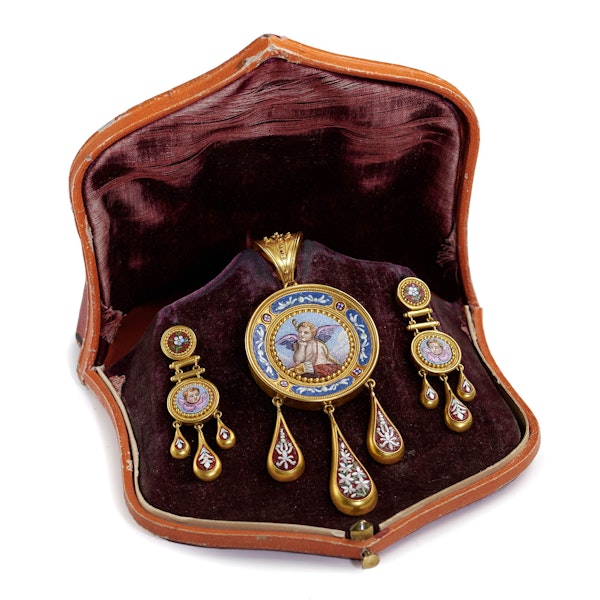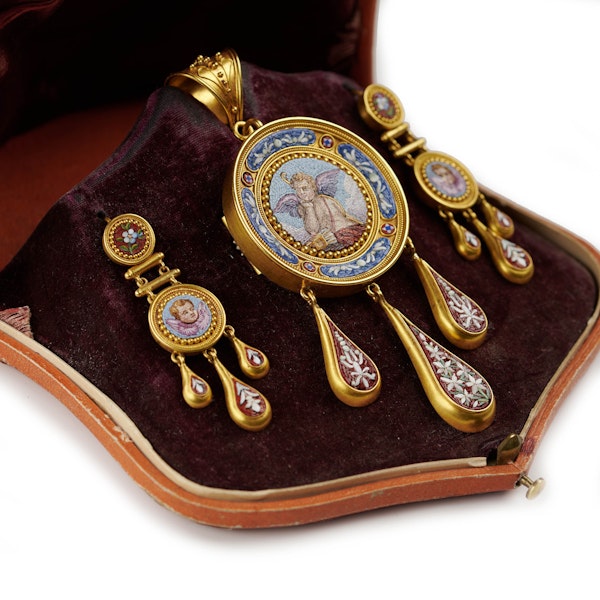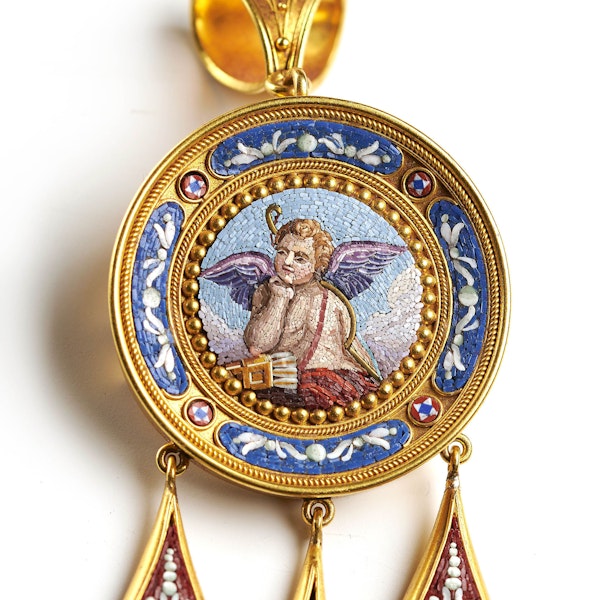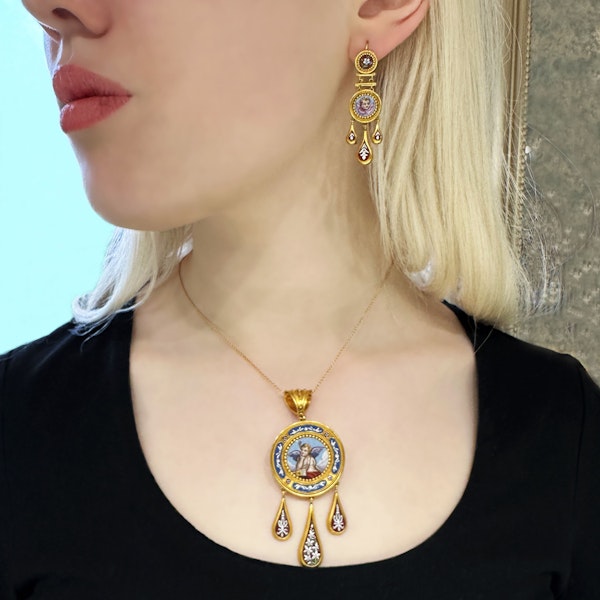Antique Italian Micromosaic And Gold Brooch-Cum-Pendant And Earrings Suite, Circa 1840
Antique Italian Micromosaic And Gold Brooch-Cum-Pendant And Earrings Suite, Circa 1840
£24,000.00
Description
An antique Italian micromosaic and gold brooch-cum-pendant and earrings suite. The pendant has a gold bale, with granulated Etruscan style work, the central micromosaic features Cupid, with the sky as the background, with a circular surround of Etruscan style granulation and wirework and blue, white and red micromosaics, with three pendant drops, set with micromosaics, with white flowers on a red background, with a shepherd hook on the back for the removable bale and a pin and catch fitting, with studio marks on the back and pin. The earrings feature a micromosaic cherub, on a pale blue background, with a circular surround of Etruscan style granulation and wirework, with micromosaic circle tops, with forget-me-nots, on a red background, with gold bars below, with three pendant drops, set with micromosaics, with white flowers on a red background, with studio marks on the back and Vatican marks on the wires, mounted in gold, circa 1840, in a fitted case.
Approximate Weight: Brooch 20.81g, earrings 8.38g
Mosaics are an ancient form of decoration, made of tiles, tesserae in Italian, from the Greek tesseris, referring to their four sided shapes. Earlier mosaics were made of stone and glass. Micromosaic utilised enamel, made of fused silica, with minerals to produce the required colours. The shapes were circular or cubic and known as “loaves”.
They flourished in the Roman, Byzantine and medieval periods. The Vatican Mosaics Studio was established at the end of the 16th century. It was responsible for the maintenance of the works of art in St. Peter’s Basilica.
Production of micromosaics date from the end of the 18th century. Earlier designs were inspired by neoclassical allegorical themes, these were followed by flowers, animals and the well-known ruins of Rome. Due to growing demand of micromosaics the Workshop of St. Peter was set up, in 1795 as a branch of the Mosaics Studio.
The Pope presented some of the finest works to visiting diplomats and sovereigns. They began to circulate more widely and gained prestige among the wealthy and those on the Grand Tour.
Craftsmen who had trained in the workshops of the Vatican set up stands in the area surrounding Rome’s Spanish Steps, where most of the tourists stayed, to sell their Grand Tour micromosaics. They sold ready-made pieces and took commissions. The majority of micromosaics are unsigned, although Gioacchino Barberi and Giacomo Raffaelli were master craftsmen who did sign their pieces.
The micromosaics were usually sold without frames and tourists went to jewellers to have them set in jewellery or decorative objects.
With thanks to Il Micromosaico di Luigina Rech – micromosaico.it translation by John Matthews
| item details | |
|---|---|
| Origin | Italian |
| Period | Pre 1900 |
| Style | Etruscan |
| Condition | Very good |
| Materials | Gold |
| Dimensions | Brooch length approximately 84mm, width approximately 33.8mm. Earrings length approximately 48.4mm, including wires, width approximately 12.4mm |
Product REF: S11124S
